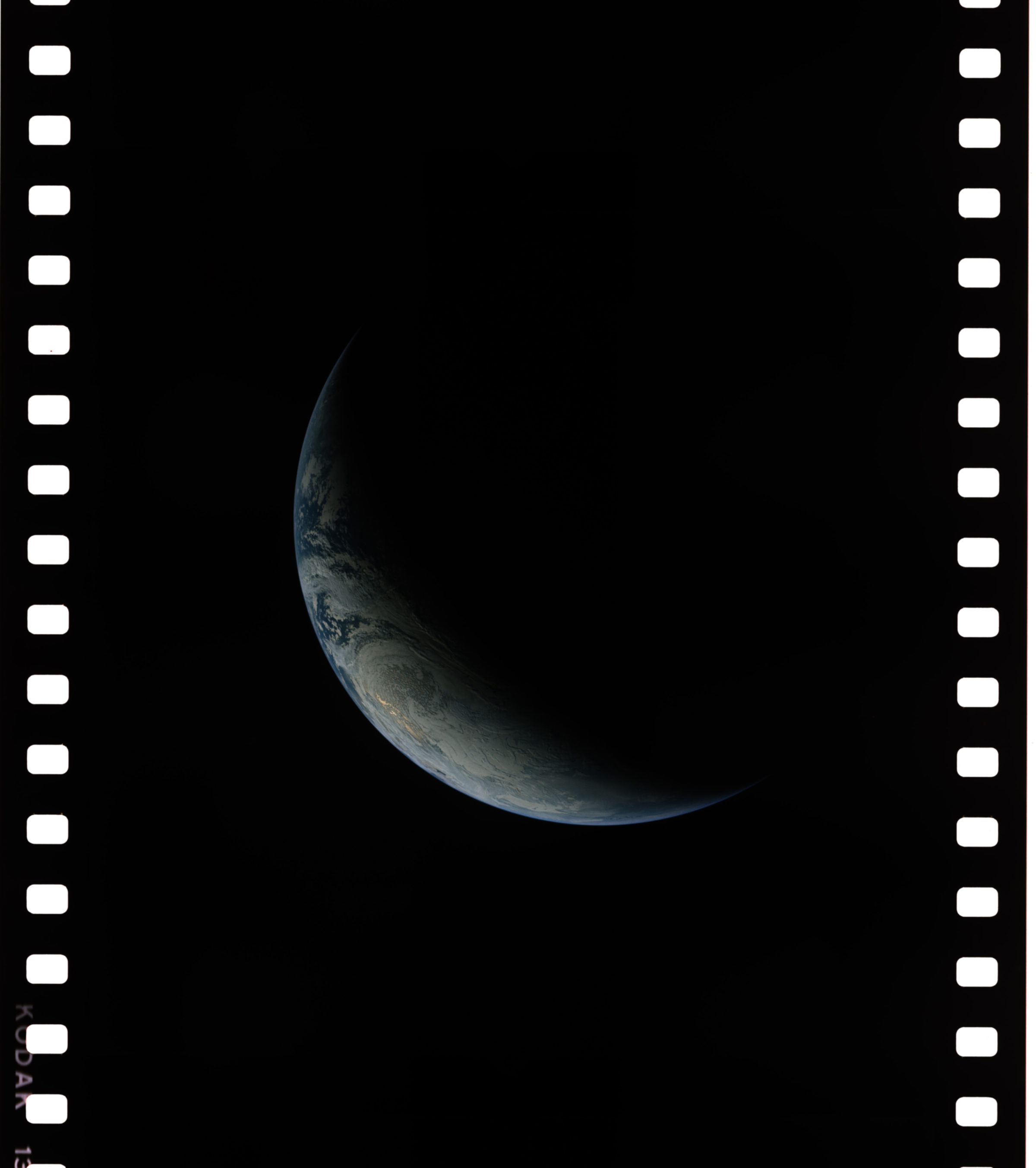Jason Davis • May 23, 2018
The curious case of the Apollo 4 Earth images
I recently stumbled upon an image of crescent Earth taken during Apollo 4, on November 9, 1967. It was a beautiful shot, but not one I had ever seen, despite having trawled through the Apollo archives many times.
Apollo 4 was the first test flight of the Saturn V rocket. It sent an uncrewed command module to high Earth orbit, where an engine burn sent the spacecraft hurtling back towards the ocean at speeds comparable to returning from the Moon. The entire mission lasted just eight hours. What I didn't know, until seeing that crescent Earth image, was that there was a camera in the command module window, timed to take pictures from an altitude of about 18,000 kilometers during the final orbit. In total, 755 pictures were taken, and 712 had some or all of Earth in the frame. The mission imagery report says they are the first color film photos taken from that altitude.
You can find the low-res image thumbnails online, thanks to the Lunar and Planetary Institute in Houston. But curiously, I couldn't find any of the high-res images except a couple cropped excerpts scattered around the Internet. This is in stark contrast to the crewed Apollo missions, which have been exhaustively cataloged.
I got in touch with David Bigwood, who works at the LPI Regional Planetary Image Facility, one of several such facilities around the world that host physical and digital space mission imagery. David located the high-res versions, scanned from film. Unfortunately, the file set was huge, consuming a whopping 1.3 terabytes of disk space. David was kind enough to compress the TIFF files into smaller, 14000-by-16000-pixel JPGs, and send me copies. It took him more than a week, though I think (hope) that most of that was computer processing time, not manual labor. Thanks, David!
Even compressed, the images are beautiful. Here's one with Earth right in the middle of the frame:

Naturally, I wanted to see if I could turn all 755 images into a video, so I imported them into Final Cut Pro and gave it a shot. Thanks to the extremely high-res files, I was able to create a 4K video. Here's the result:
As you can see, Earth's position jumps around vertically from frame to frame—either due to the command module moving, the film advancing different amounts, the scanning process being non-uniform, or some combination of all three. I started to manually line up the images, but gave up after realizing how long that was going to take.
Next, I tried Final Cut Pro's built-in video stabilization filters, which helped a little (my co-worker Merc Boyan also tried the same technique in Adobe Premiere):
Better, but not perfect.
Then, I found this on YouTube:
As you can see, someone beat me to this idea three years ago! I don't know if the YouTube user, Patrick Koelewijn, was the original creator, but this is a much nicer video than my quick-and-dirty Final Cut Pro render.
The description for that video says the source files came from the Johnson Space Center's Gateway to Astronaut Photography of Earth website. Armed with the original filenames from LPI, I was able to find the images individually on the JSC site. Here's the image shown on the LPI filmstrip I posted above: AS04-1-545. You'll notice it's much different! It's a smaller, cropped image, but not color-adjusted like the film strip. It looks more like an actual photo.
I'm not sure how each image set came to be, but I'm happy to share the compressed JPG library from LPI. I originally tried to share it as a single, 36-gigabyte ZIP file on The Planetary Society's image server, but some of the files got corrupted, so I split the library into multiple files. Some of those files got corrupted, so I added two "missing" zip files to fill in the gaps.
It's a bit convoluted, but you'll have the whole set if you download these files:
- AS04-001-0000 to AS04-001-0099
- AS04-001-0100 to AS04-001-0199
- AS04-001-0200 to AS04-001-0299
- AS04-001-0300 to AS04-001-0399
- AS04-001-0400 to AS04-001-0499
- AS04-001-0500 to AS04-001-0599
- AS04-001-0600 to AS04-001-0699
- AS04-001-0700 to AS04-001-0757
- AS04-missing
- AS04-missing-2
If anyone creates a new video based on these images, please let me know!
Let’s Go Beyond The Horizon
Every success in space exploration is the result of the community of space enthusiasts, like you, who believe it is important. You can help usher in the next great era of space exploration with your gift today.
Donate Today

 Explore Worlds
Explore Worlds Find Life
Find Life Defend Earth
Defend Earth

